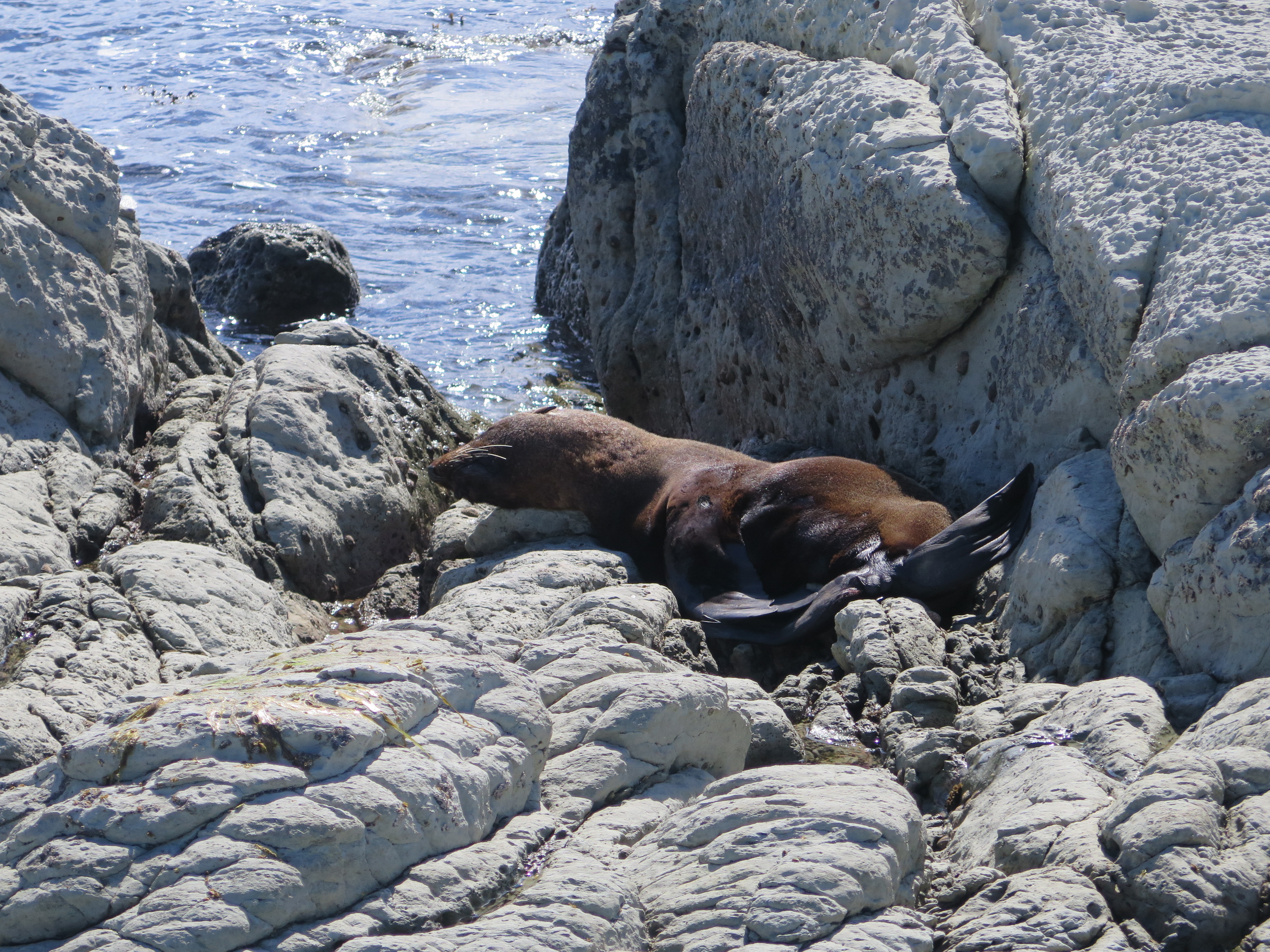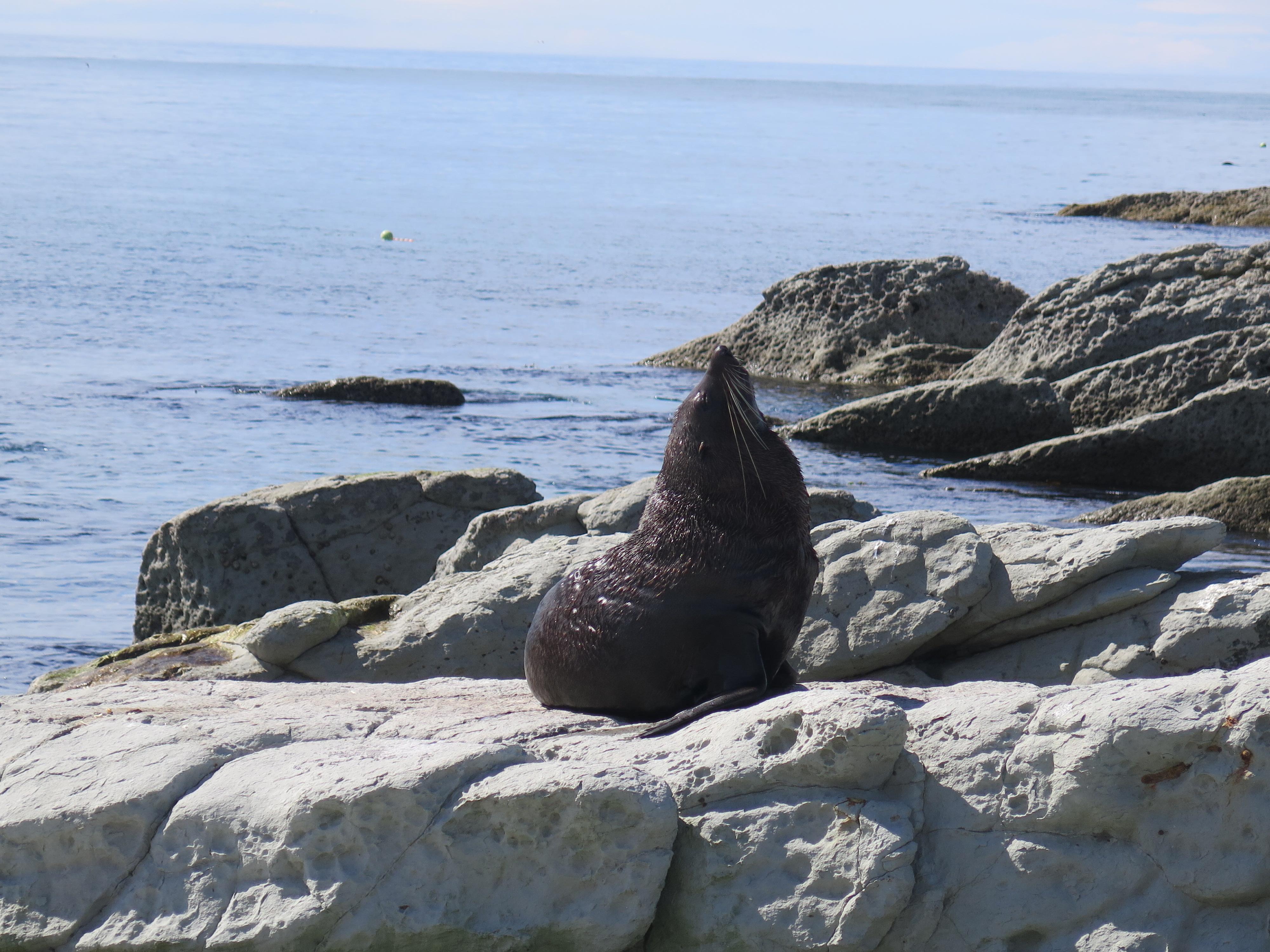Since we arrived late, we stayed last night in Christchurch and then set off first thing this morning to head to Kaikoura. Kaikoura is about two and a half hours drive north of Christchurch and the route takes you through some beautiful countryside. It starts with rolling hills with vineyards in the valley and gradually gets more mountainous. The road weaves through the foothills and then comes down to the coast just south of Kaikoura. However, it is not easy to match the driving time suggested by the sat nav due to the state of the roads. All along the main State Highway 1 are roadworks and at one points the main road is just one lane for several hundred metres where the other lane has collapsed into the valley.
The reason is the 2016 Kaikoura earthquake. This earthquake was a magnitude of 7.8 and happened two minutes after midnight on 14 November 2016. Ruptures occurred on multiple faults and the earthquake has been described as the “most complex earthquake ever studied“. The bay and region around the town was uplifted by as much as 2 metres and it also caused a tsunami estimated at 5 metres at its worst. More than 900 people had to be evacuated from the town.
Kaikoura is beautifully situated on a peninsula with the Seaward Kaikoura Range, a branch of the Southern Alps, rising straight from the ocean behind the town.

Kaikoura was named by an explorer known as Tama ki te Raki who travelled throughout Te Waipounamu (South Island). He stopped in the area and ate some of his favourite food – koura (crayfish) cooked over an open fire. The area was then named Te Ahi Kai Koura a Tama ke ti Koura. Loosely this translated as ‘the fires whete Tama ki te Raki ate crayfish‘. However, this was more of a mouthful than the crayfish and so it became known as Kaikoura.
At the end of the peninsula on a rocky ledge is a colony of fur seals. The seals (Arctocephalus forsteri), are more generally known as the Australasian fur seal, the New Zealand fur seal or Antipodean fur seal. In the Māori language they are called kekeno. The ledge is very extensive and we walked some way out to get a good look. They were often well hidden in rocky crevices looking very comfortable as they sunned themselves and we had to be very careful not to accidentally get too close to one.

Slightly embarassingly for a sailor, we had, in our excitement at watching the seals, forgotten about the tide. When we got back half way back to the car we discovered this! Shoes, socks and trousers were duly removed and with the air slightly blue with expletives (the water was quite cold) we made it across to the other side. To rub our noses in it, five minutes later a group of kayakers paddled through the gap we had originally walked across!

